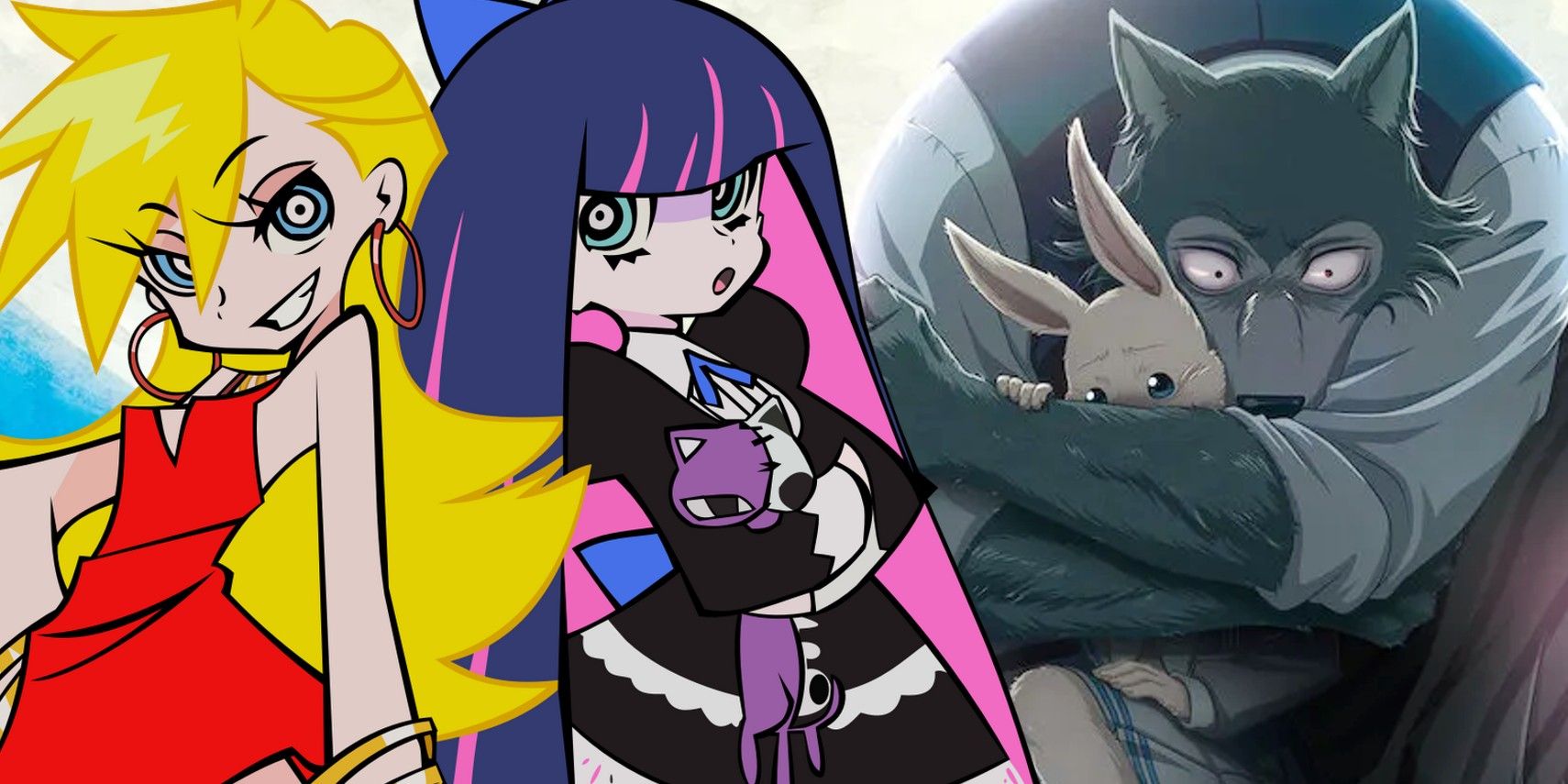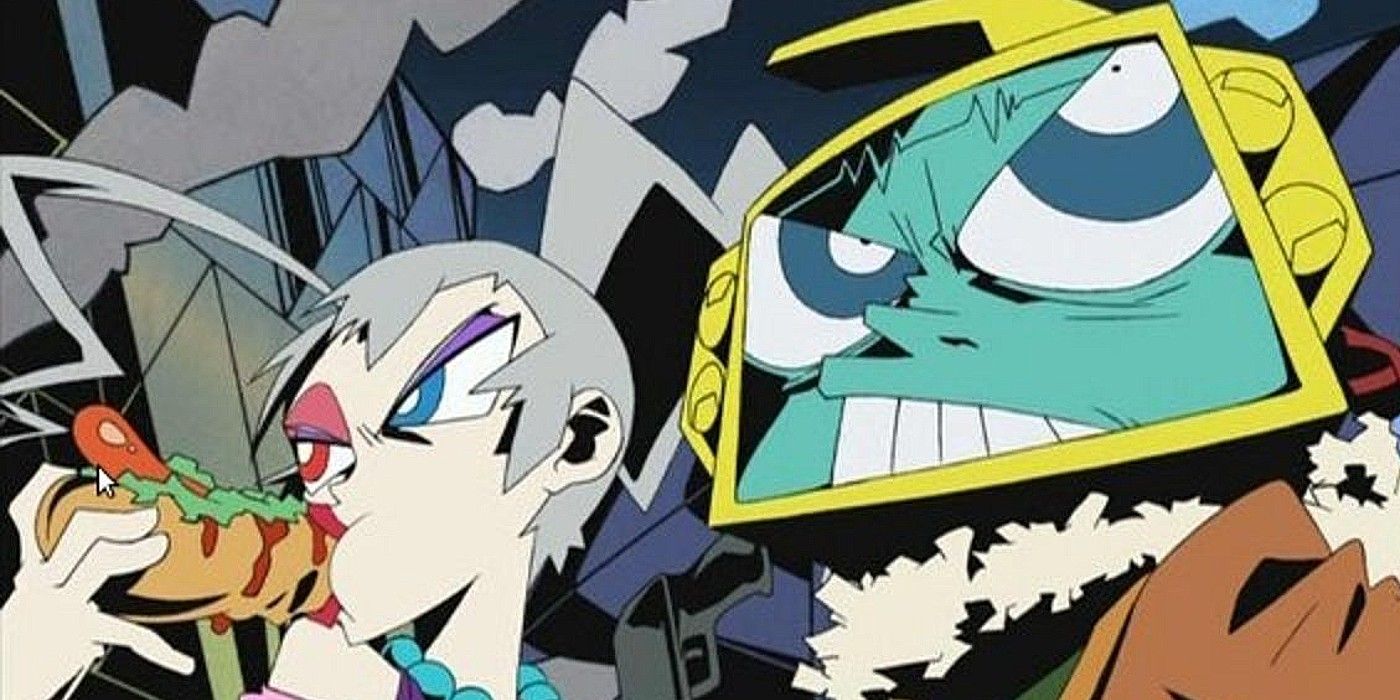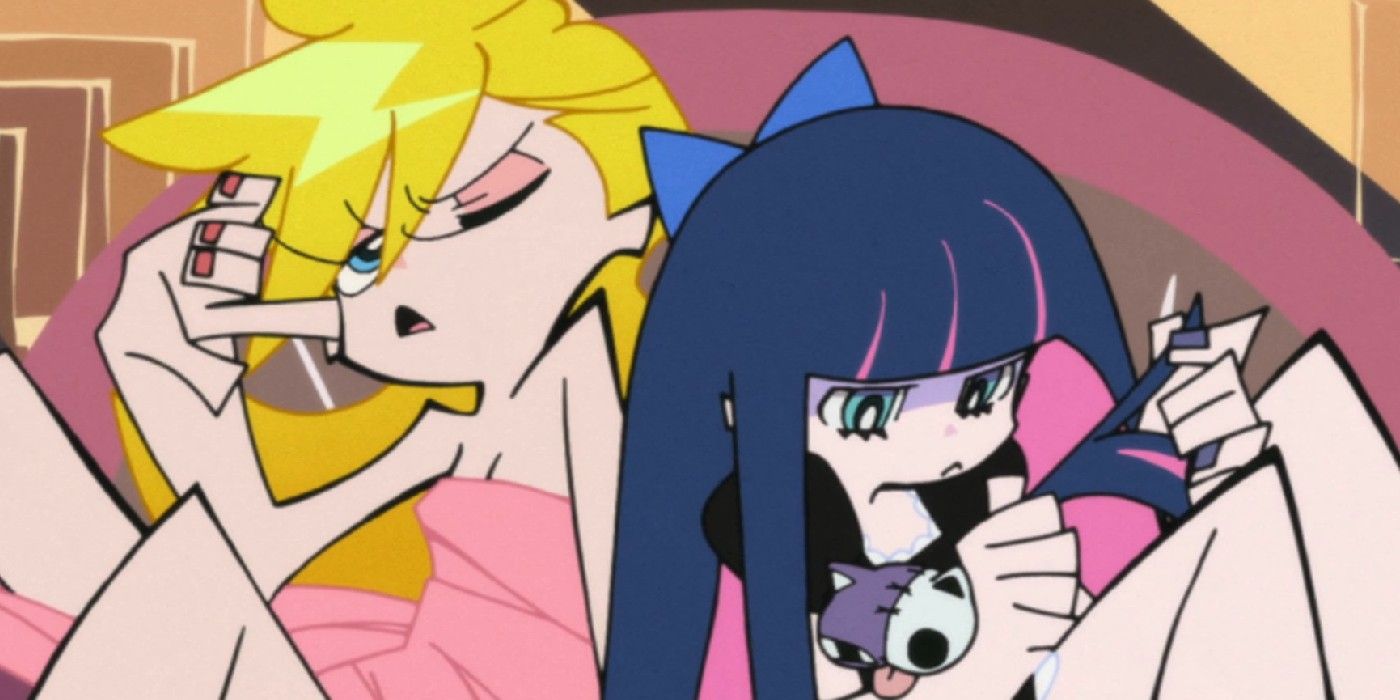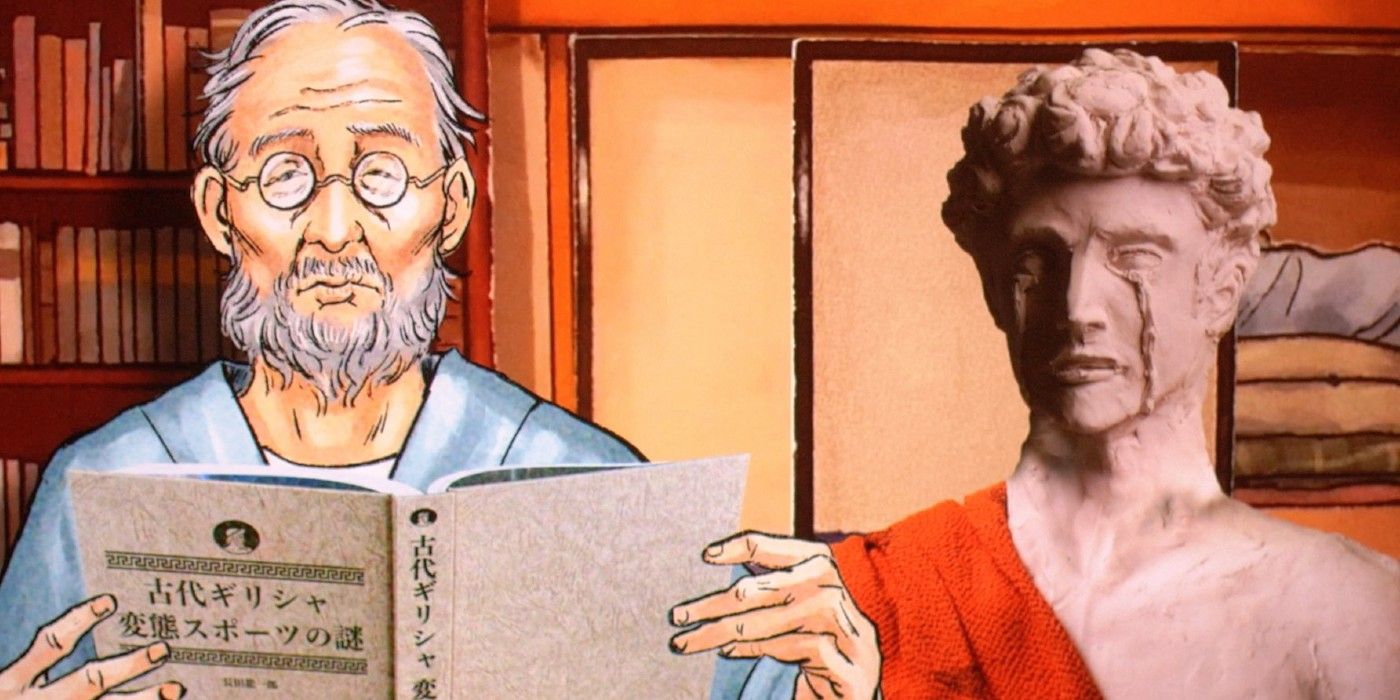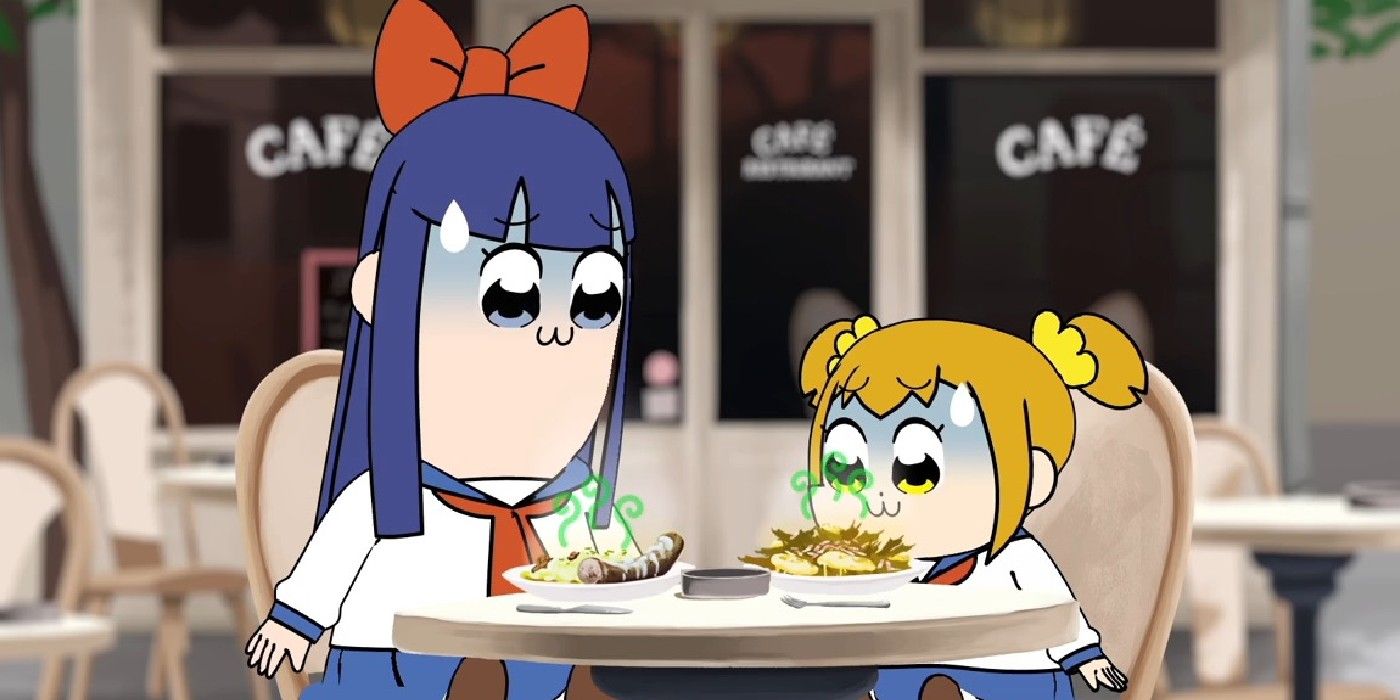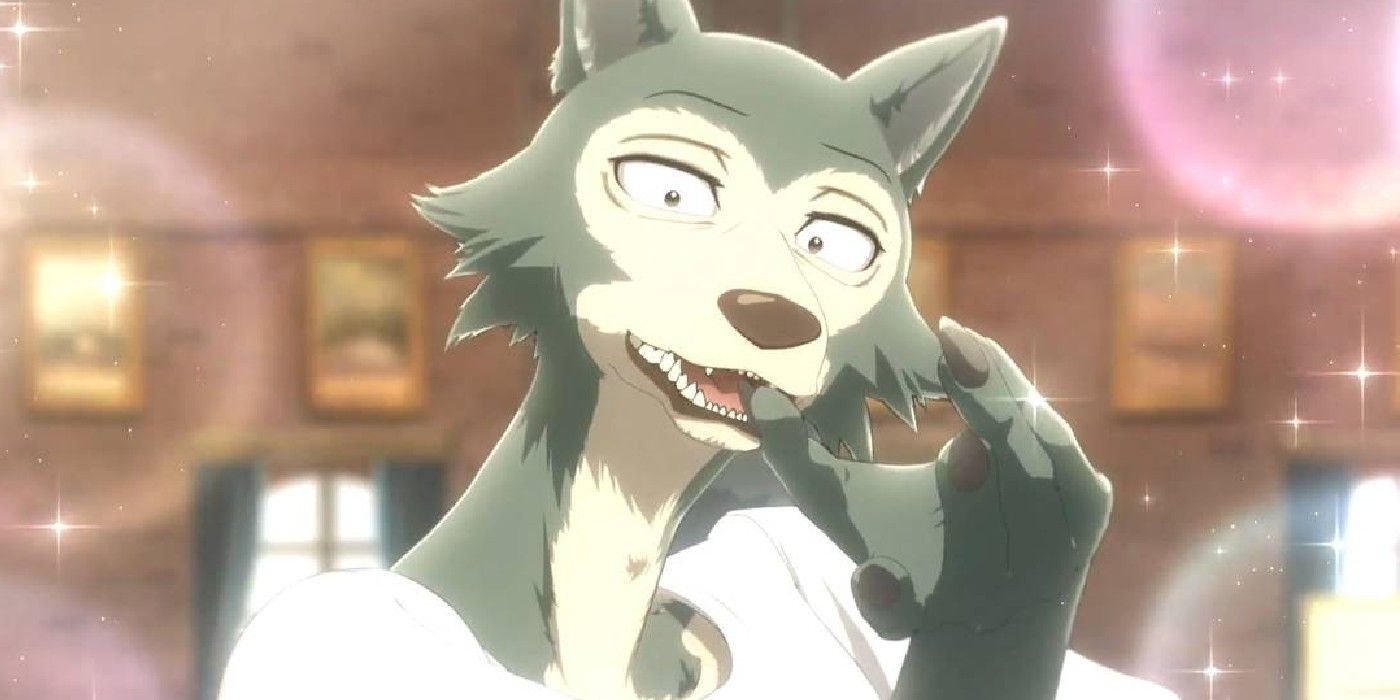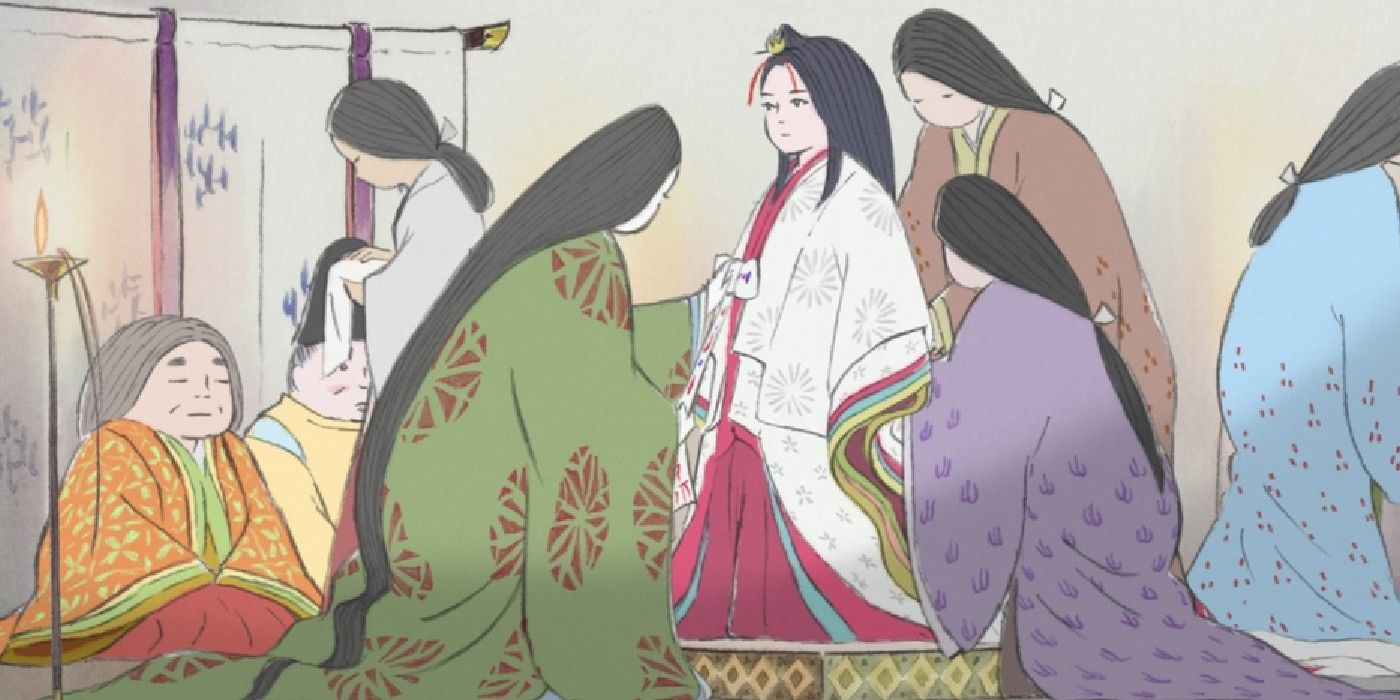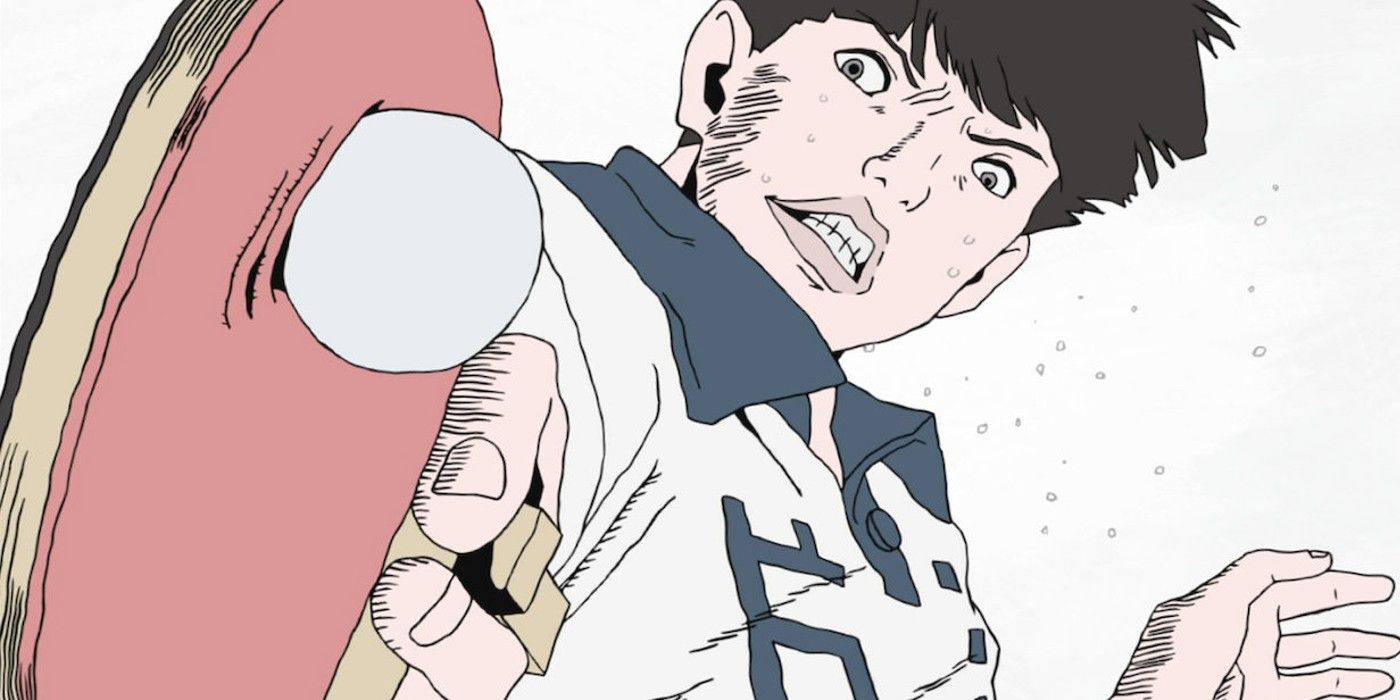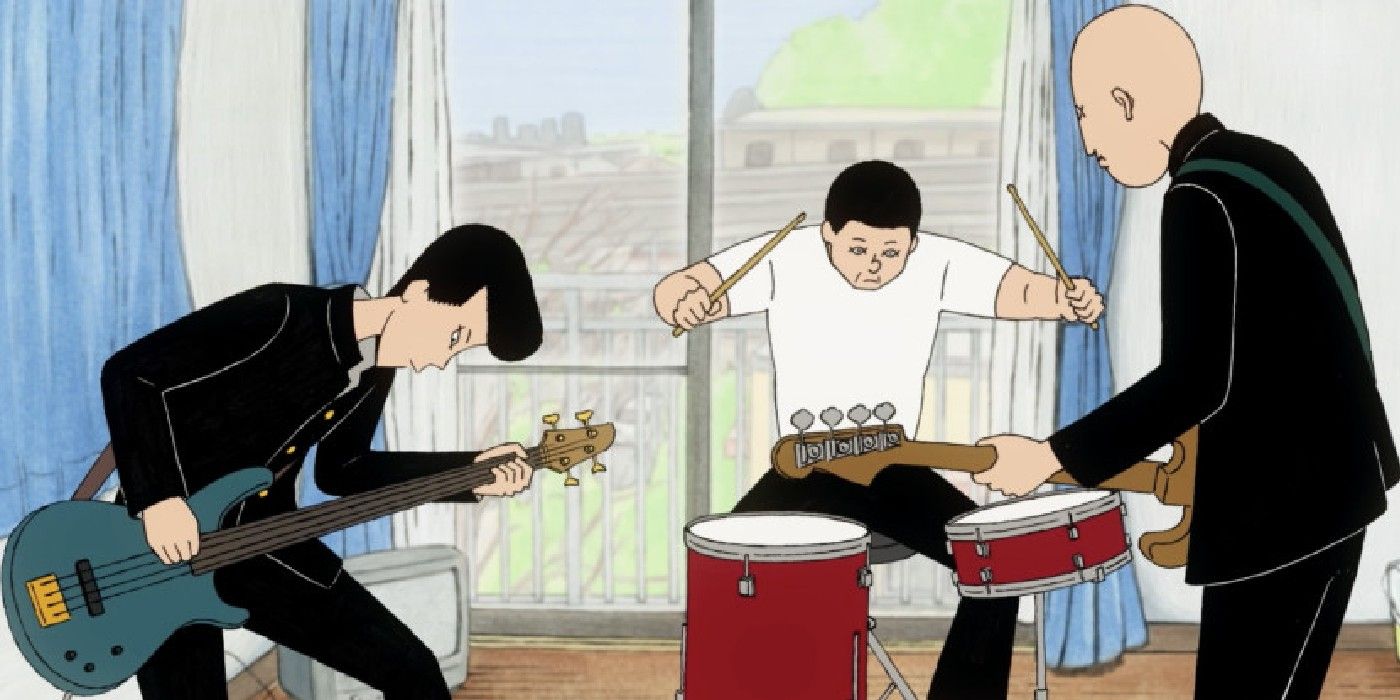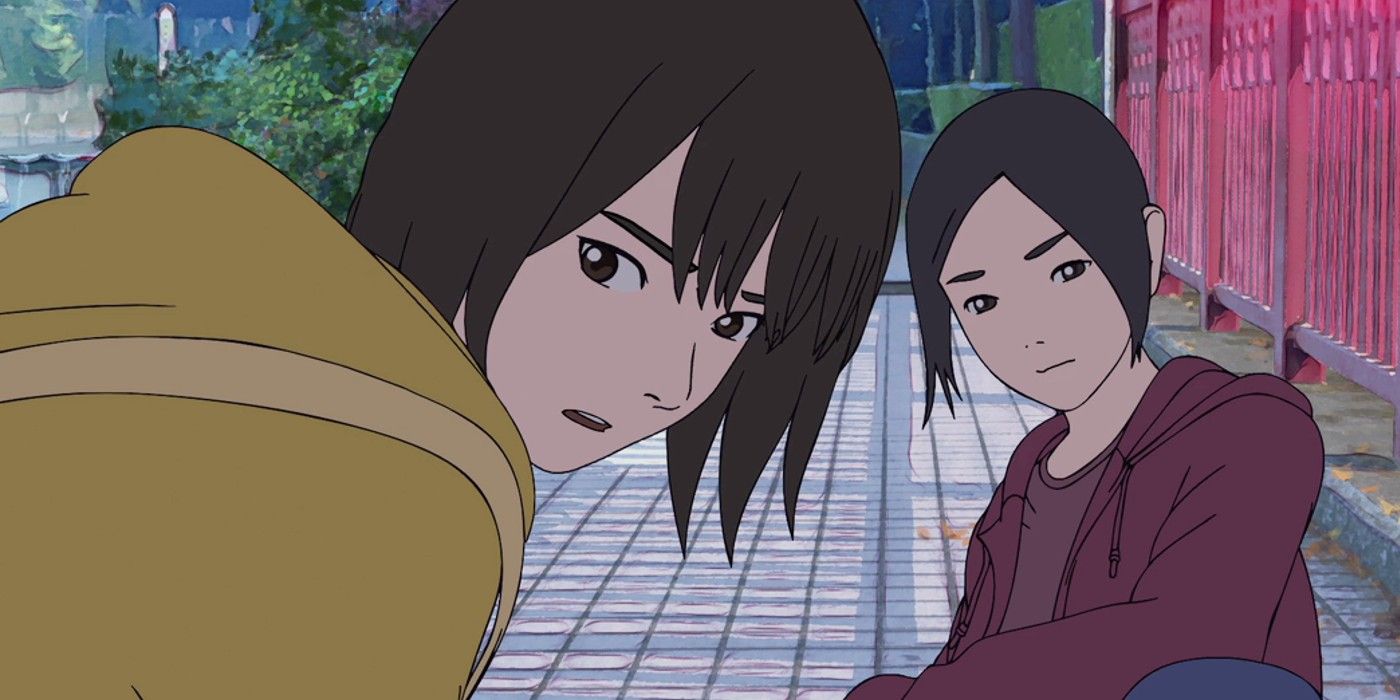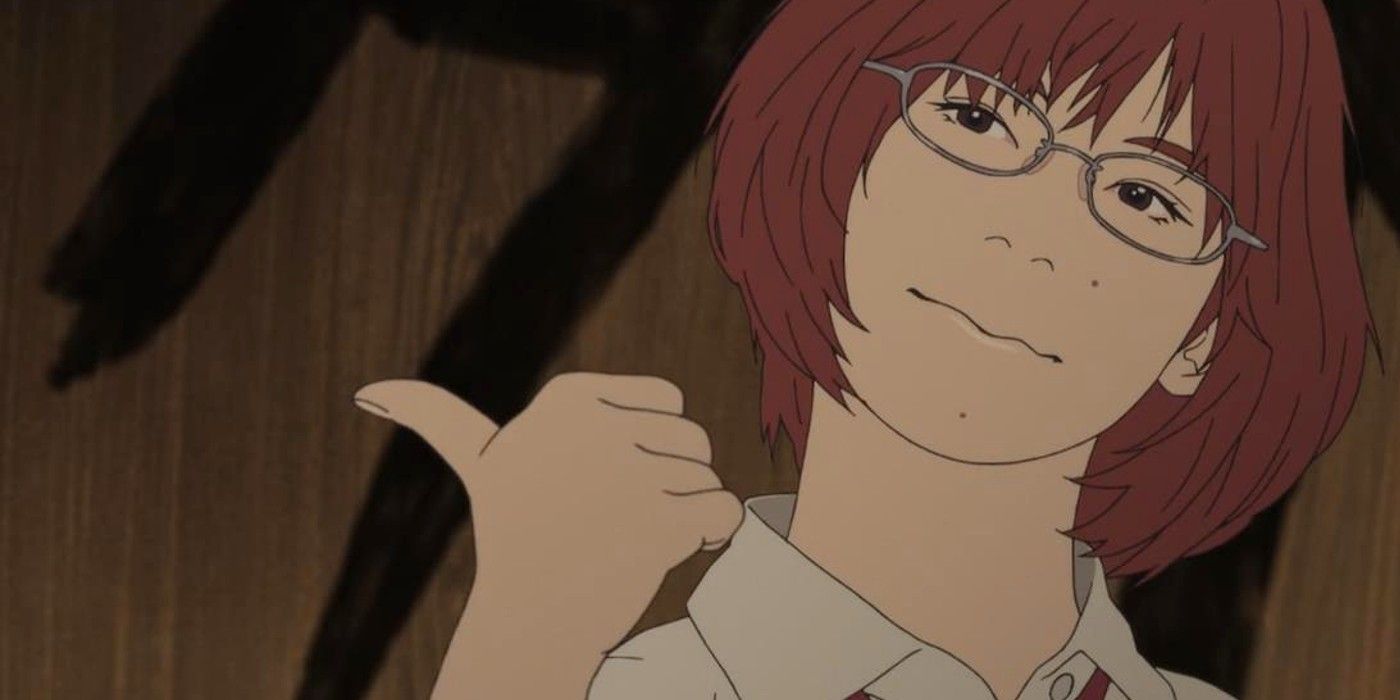Broadly speaking, "anime" is just the Japanese shorthand for "animation." But thanks to its global popularity and certain titles becoming the medium's benchmarks, the term now comes with a set of expectations.
Stylistic choices like big cartoony eyes or explosive superpowers have now become synonymous with anime, even if not all anime conform to these preconceived notions, let alone acknowledge them.
10 Dead Leaves Was Inspired By American Underground Comics
Hiroyuki Imaishi made a name for himself in the anime community for his truly bizarre and wild style. In fact, his madcap animation and storytelling choices as seen in the likes of Space Patrol Luluco and the episode "The Twins" from Star Wars: Visions can all be traced back to his directorial debut: Dead Leaves.
Visually, Pandy and Retro's crime spree owes more to the underground American comics of the '90s and early adult animation shown on MTV or Adult Swim than anime. Aside from the sharp character designs and the strong color contrasts, Dead Leaves also adopted its influences' love of crass humor and imagery.
9 Panty & Stocking With Garterbelt Is Anime's R-Rated Homage To American Cartoons
To no one's surprise, director Hiroyuki Imaishi paid homage to American cartoons and pop culture with Panty And Stocking With Garterbelt. Aside from the Anarchy Sisters and everyone else referencing a facet of American entertainment at every turn, their anime was also drawn in the style of 2D cartoons of the time.
If not for the endless swearing, sex jokes, violence, and more, Panty And Stocking With Garterbelt wouldn't look misplaced if it were put beside the likes of Danny Phantom or The Grim Adventures Of Billy And Mandy. A key influence was the raunchy Drawn Together, and many of the anime's ideas came from drunken staff parties.
8 Extra Olympia Kyklos Looked Like A Multimedia Educational Show About Sports
Extra Olympia Kyklos is far from the first anime to use time travel for comedy, but it boasts one of the most unique visualizations of the ensuing culture clash of time periods and country norms. In brief, the ancient Greece that Demetrios lives is in animated through claymation, and Japan in 1964 is depicted in hand-drawn cutouts.
Because of this combination of two very different methods of animation, Extra Olympia Kyklos looks more like an educational cartoon found on a history network than an anime. But given the fact that Demetrios' zany adventures in 60s-era Japan are all about learning modern sports, the anime's look is rather appropriate.
7 Pop Team Epic Used Every Animation Style It Could Get Its Hands On
Unlike the gag manga it was based on, the animated Pop Team Epic doesn't have a uniform style. The anime's signature look perfectly translated Popoku and Pipimi's illustrated selves to anime, but even then, they looked like weird chibi caricatures that were randomly shoehorned into pre-existing anime as part of a joke.
Things got even stranger when Pop Team Epic shifted art styles in every other sketch, even changing mediums on the fly. One moment, Popoku and Pipimi would be fluidly animated in CGI during the JAPON MiGNON segments, and in the next, they'd be sprites in a 16-bit game parody or felt puppets in a stop-motion musical.
6 Beastars Was A CGI Adult Anime About Talking Animals
Aside from being one of the most fluidly animated and gorgeous-looking CGI anime of recent memory, Beastars caught almost everyone's attention when it debuted because it starred talking animals. Anthropomorphic animals in animation are not a rarity, but what made Legosi and Haru's story stand out was its borderline explicit content.
Beastars is one of the few adult-0riented anime to star talking animals (who are synonymous with kids' entertainment), or even in cartoons as a whole. The anime's visuals complement the manga's grimy world that's paradoxically populated by hopeful animals, and it never shies away from its inner darkness and occasional moments of peace.
5 The Tale Of The Princess Kaguya Was A Painting Come To Life
Aside from being directed by someone other than Hayao Miyazaki, The Tale Of The Princess Kaguya stands out in Studio Ghibli's repertoire thanks to its unique look. Rather than reuse Studio Ghibli's recognizable style, Isao Takahata chose to depict Princess Kaguya's time on Earth through what can be best described as a cinematic painting.
The Tale Of Princess Kaguya shared more in common with traditional Japanese paintings than anime, which fit and helped emphasize the story's serene tone and close link to nature. Unfortunately, Takahata's last movie went relatively unseen and bombed at the box office despite being highly praised by both domestic and international critics.
4 Ping Pong The Animation Adapted The Manga's Unique Art Style
Sports fiction is one of the most popular genres in all of anime, so much so that it's almost impossible for any title to stand out unless it was incredibly popular. Ping Pong The Animation subverted this issue by eschewing sports anime's usual conventions like epic comebacks and sticking to the manga's distinctly scratchy art style instead.
The best comparison that could be made to Ping Pong would be Studio Gonzo's work on the music video for Linkin Park's "Breaking The Habit," since both have grounded looks and styles that aren't averse to exaggerated actions and body language. As a result, table tennis became exciting in ways never thought possible.
3 On-Gaku: Our Sound Was One Man's Anime Adaptation Of His Friend's Manga
At first glance, On-Gaku could be mistaken for Saitama's doodled deadpan reaction from the rarely serious One-Punch Man. The truth is a lot more complex than it seems. Not only is the movie about Kenji's band a mix of the manga's scratchy style and rotoscoping for the delinquent's physically accurate instrument playing, but it was predominantly made by one man.
Kenji Iwaisawa funded, directed, wrote, edited, and animated On-Gaku (which is also his first feature film), only requiring outside help for crowdfunding and some of the sequences. Iwaisawa adapted the manga by Hiroyuki Oohashi not just because he was touched by the story but to pay tribute to Oohashi, who's also his friend.
2 The Case Of Hana & Alice Was A Live-Action Movie's Rotoscoped Prequel
Hana And Alice is a slice-of-life movie about a pair of best friends whose friendship is tested when they both fall for the same boy. Something known less than this movie's existence is the fact that is that it has an anime prequel. That said, not everyone would recognize The Case Of Hana And Alice as anime because of its rotoscoped style.
Because of its rotoscoped visuals, the origin story of Hana Arai and Alice Arisugawa's friendship reminded viewers of an experimental indie movie, not anime. The fact that The Case Of Hana And Alice lacks any of the usual anime conventions like artifice and exaggeration only bolstered the claim that it was "anime in name only."
1 The Flowers Of Evil Was A Rotoscoped Descent Into Madness
The Flowers Of Evil (which was actually inspired by Charles Baudelaire's classic poetry) is a very cynical look into the lives of troubled teenagers, whose only escape from their hometown's suffocating mundanity is to delve into the world of degenerate fetishes. To ground the story and its disturbingly relatable themes, director Hiroshi Nagahama chose to rotoscope it and add surreal flourishes when necessary.
Unsurprisingly, this preference for realism was controversial among the manga's fans. Those hoping for an animated recreation of Shuzo Oshimi's distinctly ominous manga were disappointed, while others loved the anime's strangely alluring look. For better or worse, The Flowers Of Evil remains one of the most visually unique anime ever made.

